Just about all bullion investors worry about counterfeits. Those concerns are magnified when someone is buying for the first time. Stories about fake coins from Asia and gold bars drilled and filled with Tungsten have been in the headlines recently. But the truth is, counterfeiting is just about as old as the concept of money itself.
Fortunately, making phony coins or bars isn’t easy. The equipment involved is significant – it takes far more than a color printer and the right paper. And making fakes good enough to pass a few simple tests is almost impossible.
Some testing equipment, such as mass spectrometers and sonogram machines, are expensive and impractical for the typical person to use.
However, here are some lower budget ways you can determine whether or not the bullion you hold is genuine:
Size and Weight
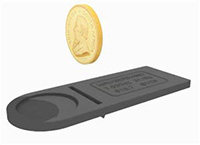 Gold and silver are extraordinarily dense metals – much denser than just about any base metal (even lead and mercury in the case of gold). That means just about all fakes that weigh correctly will be too large in diameter and/or thickness. Or they will be underweight in order to achieve the right diameter and thickness. Simply comparing the diameter and thickness of the coin in question with others known to be genuine could be enough to put you at ease.
Gold and silver are extraordinarily dense metals – much denser than just about any base metal (even lead and mercury in the case of gold). That means just about all fakes that weigh correctly will be too large in diameter and/or thickness. Or they will be underweight in order to achieve the right diameter and thickness. Simply comparing the diameter and thickness of the coin in question with others known to be genuine could be enough to put you at ease.
If not, an inexpensive set of calipers and a jeweler’s scale are a good way of checking. Every coin or round is produced with close tolerances in terms of diameter, thickness, and weight. You can find these dimensions on the “Specifications” tab on our coin and round product pages.
Investors might also consider Fisch Testers. Genuine coins will be both small enough in diameter and thin enough to fit through a slot in the tool, while remaining heavy enough to tip the tool on its fulcrum. Simple and very effective.
Sound or “Ping” Testing
Authentic gold and silver coins chime when struck and the difference is notable versus base metals.
Base metal coins will sound duller and their ring will be shorter — much like the difference between clinking crystal versus glass champagne flutes.
Try balancing the coin on your fingertip and strike it with another coin. This video provides a good demonstration:
Magnetism
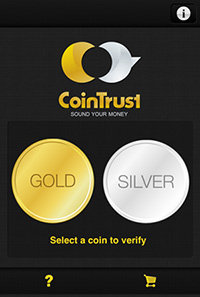 The above video on ping testing also references another simple technique for using a magnet to identify fakes. Gold and silver are non-magnetic. Placing a strong magnet on a coin and tipping it to watch whether the magnet slides off, as it should, or sticks, like it would to a counterfeit, requires only an inexpensive magnet and a few seconds. (Note that some base metals used in counterfeiting are also non-magnetic, so we suggest doing this in conjunction with some other techniques listed.)
The above video on ping testing also references another simple technique for using a magnet to identify fakes. Gold and silver are non-magnetic. Placing a strong magnet on a coin and tipping it to watch whether the magnet slides off, as it should, or sticks, like it would to a counterfeit, requires only an inexpensive magnet and a few seconds. (Note that some base metals used in counterfeiting are also non-magnetic, so we suggest doing this in conjunction with some other techniques listed.)
Thermal Conductivity Testing for Silver
Silver is one of the best conductors of thermal energy found in nature. That makes it easy to test silver bullion using nothing more than an ice cube. Place an ice cube on top of a silver bar, coin, or round, and you should see it begin melting almost instantly as heat is quickly transferred. Holding a coin or round between fingers or in the palm of your hand makes the results even more noticeable as the silver rapidly cools to your touch.
Acid Testing
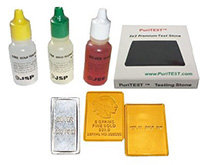 Investors can purchase inexpensive acid test kits for gold and silver. Watching the color change in a drop of acid can reveal whether or not a sample is genuine. However, acids should be handled carefully. Your items can be permanently discolored.
Investors can purchase inexpensive acid test kits for gold and silver. Watching the color change in a drop of acid can reveal whether or not a sample is genuine. However, acids should be handled carefully. Your items can be permanently discolored.
Since bullion coins, rounds, and bars are valued for their metal content, not their beauty, discoloration is unlikely to reduce the value of your bullion by more than a small amount. But it’s still wise to use acid testing sparingly and with caution.
A Word about Tungsten Fakes
Some of the hardest to detect counterfeit gold products involve tungsten. Tungsten’s density is close to that of gold, and it is relatively inexpensive. Here are some of the best ways to avoid problems:
Avoid large gold bars. 10-ounce and larger gold bars are among the easiest to tamper with as they can be drilled, filled with tungsten, and then plugged again with gold. This is more difficult with units 1 oz and smaller. Tungsten is extraordinarily hard whereas gold is soft. This means tungsten is very difficult to use in minting or fabricating small items. It is brittle, and stamping it with a design will result in coins with less detail unless it has been plated with a thick layer of gold.
Ring testing as outlined above should still offer defense against tungsten fakes.
If the deal is too good to be true, it probably is. Never buy gold bullion below its melt value unless you know and trust its origins.
Buy silver. No metal shares a similar density to silver, making it even more difficult to make good counterfeits than with gold. Plus, the financial incentive is lower.
Recently some of the more prominent mints and refiners have begun employing technology to mark products with seals that assure authenticity. For example, Sunshine Minting rounds and bars carry a seal that reads “VALID” when viewed using their proprietary lens and oriented correctly.
Investors can expect this sort of technology to be more widely used in the coming years. (Note: the lens carries a cost of around $20.00 and needs to be purchased separately from the metal itself.)
As mentioned above, the best defense against fake bullion is to buy from a reputable dealer. Money Metals Exchange sources products directly from well-regarded mints and refiners and employs good quality controls. That is why we can confidently stand behind every product we sell – guaranteeing authenticity, weight, and purity.
This Guest Post was contributed and written by Clint Siegner, a Manager at Money Metals Exchange, perhaps the nation’s fastest-growing dealer of low-premium precious metals coins, rounds, and bars. Siegner, a graduate of Linfield College in Oregon, puts his experience in business management along with his passion for personal liberty, limited government, and honest money into the development of Money Metals’ brand and reach. This includes writing extensively on the bullion markets and their intersection with policy and world affairs.
You may also like:
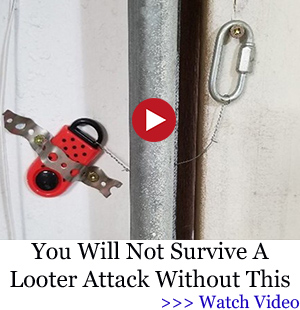 15 Strange Meals People Ate During The Great Depression
15 Strange Meals People Ate During The Great Depression
How To Build The Invisible Root Cellar (Video)
Where To Hide In Case of A Nuclear Attack
11 Expensive Items That Used To Be Cheap
Why You Should Put A Coin In A Cup Of Frozen Water In Your Freezer

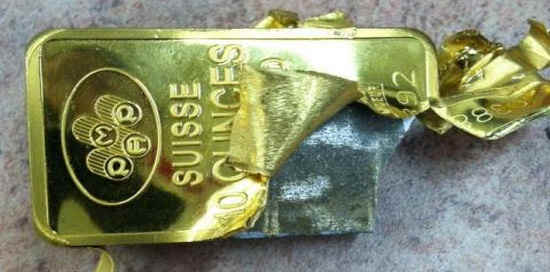













You’ll find one of the big advantages of a copper bottom
cookware set the moment you start extracting your brand new pans
and pots from the box. Also, food doesn’t brown as well in a nonstick pan.
The storage of the pans is far easier when you may have this potential
at your disposal.